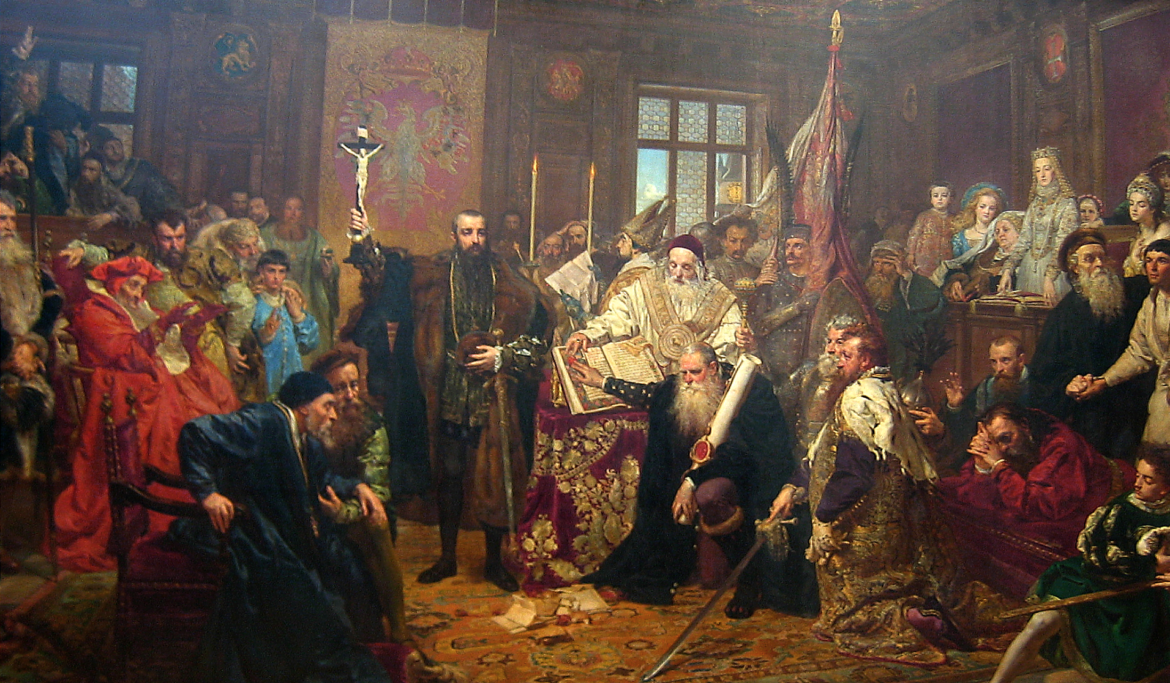On 1 July 1569 in Lublin, members of parliament representing the Crown of the Polish Kingdom and the Grand Duchy of Lithuania, hitherto independent states, signed the Union of Lublin which created the Polish-Lithuanian Commonwealth. The union of states was a transformation of a personal or dynastic union which had existed since the end of the 14th century with short breaks. As a result, the Jagiellonians combined hereditary power in the Duchy with elective power in the Kingdom of Poland to form a real union.
The Lithuanian and Polish nobility were interested in signing the union, and the Lithuanian magnates were against it. Changes to the anachronistic law of the Grand Duchy of Lithuania, necessary to create a common state, meant a significant reduction in its privileges. For a long time, the Jagiellonians, whose hereditary power in Lithuania was much greater than that in the Crown, also saw no interest in strengthening the relationship between the two-state organisms. This was no longer relevant for Sigismund II August (Polish ruler: 1530-1572; Lithuanian ruler: 1529-1572), when he lost hope for a male legitimate descendant to succeed him on the throne. Sigismund II Augustus ceded the Jagiellonian hereditary rights to rule Lithuania to the Crown of the Kingdom of Poland. The aspiration for a closer relationship with the Crown became stronger in Lithuania as the Moscow state grew stronger.
The Polish-Lithuanian Commonwealth (Commonwealth of Both Nations), which emerged as a result of the real union, stretched at the time of its greatest territorial development over an area of almost one million square kilometres. It included the territories of today’s Poland, Lithuania, Belarus and Ukraine, and temporarily also other modern states. The highest authority was exercised by General Sejm, which consisted of the king, the senate and the parliamentary chamber. The Polish-Lithuanian state had two separate armies and two separate supreme courts of appeal (established in 1578 and 1581). The system of government prevailing in the Republic was called noble democracy.





